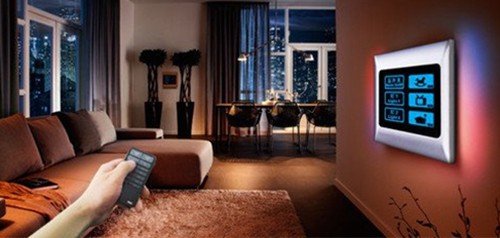OFweek smart home network news: smart home as a technological change and lifestyle changes in the air, along with industry 4.0 fire across the river. Internet appliance bigwigs have also invested in the ranks of smart homes. But what are the top priorities for general families considering smart home devices?

After surveying 700 U.S. households, Scripps Networks Interactive, an American lifestyle media company, found that when the average family considers the introduction of smart home devices, safety and comfort are the top priorities, and the introduction of smart devices takes the kitchen as the first choice. Walkway for the entrance.
According to Business Wire, the survey was conducted by the company and the Consumer Technology Association, the National Kitchen & Bath Association, the National Association of Home Builders, and the U.S. Intelligence. CEDIA is working with agencies such as Shelly Palmer Strategic Advisors.
Overall, consumers are interested in introducing technology to improve home and quality of life, and they also hope to obtain results such as safety, comfort, efficiency, and convenience.
The report also pointed out that three-quarters of respondents believe that safety and comfort are the main reasons for the decision to introduce smart home products, and only 18% said that it is to meet the expectations of others. Nearly 68% of people pointed out that energy conservation is one of the reasons to consider the introduction, hoping to save electricity, increase the value of homes, and meet environmental needs. The Millennium era (born 1980-2000) hopes that smart homes will make everyday life easier, and X era (born 1966-1980) hopes to make the home environment healthy. The era of post-war baby boomers (born 1946-1964) (year) wants to add value to the family.
As for the introduction of smart technology in the home, 25% of the respondents believe that the kitchen is the first priority, followed by the front door or entrance channel accounted for 15%, and the living room accounted for 13%. The smart kitchen products that they wish to purchase include smart refrigerators, appliances with networking and application capabilities, voice-activated wireless speakers, and motion-sensing lighting. The X era, where the kitchen was given priority, accounted for 28%, followed by 27% in the millennium era and 23% in the baby boom era.
Although only 11% of respondents have purchased energy monitoring and lighting automation technologies, 44% of respondents have listed the above products as the most likely to purchase list, with mobile device control or computer-controlled home systems, doorbell cameras and The monitoring equipment is also listed in the priority shopping list. In addition, more than one-third of respondents also wanted to incorporate home audio automation, air conditioning automation, motion lighting, and security systems.
The survey also found that when considering the introduction of smart home technology, more than half of the families wanted to seek professional assistance in making the right decision. In the process of introducing smart homes, the interviewed families also considered it important to provide professional installations and teaching, demonstration products, and trials. In addition, in addition to the cost of procurement barriers, respondents also pointed out that fear of technology and too many choices are also obstacles.
If we look at the age of ethnic groups, it is the easiest to accept smart home products for the Millennium era, accounting for 85%, half of which are intended to be adopted after 1 year; 73% in X era, and 38% in 1 year; baby boomers The age was 67%, and the percentage of buyers after one year was 28%.
Network Accessories,Wifi Adapter,Fiber Optic Network Components,Splitter Fiber Optic
Cixi Dani Plastic Products Co.,Ltd , https://www.danifiberoptic.com
![<?echo $_SERVER['SERVER_NAME'];?>](/template/twentyseventeen/skin/images/header.jpg)